When it comes to safety, maintaining quality tires is one of the most important things you can do for your car, truck or SUV. Take advantage of the Sam's Club tire experts to make recommendations and install your tires.
Quality is king at Sam's Club. That's why our tire experts use state-of-the-art equipment to mount your tires to manufacturer specifications. Plus, when you purchase tires at Sam's Club, you get members-only perks, like free balance and tire rotation for the life of the tires.
In addition to everyday car and automotive tires, Sam's Club has specialty tires for a variety of vehicles and activities: Trailer, ATV, UTV, Lawn & Garden, Power Equipment, Industrial Equipment and Snow/Winter tires.
Find the right tires for your vehicle
Tire Installation Services
Tire Pressure Monitor System (TPMS) Services
NO Charge Services
Services NOT Offered
Tire & Battery Center Hours
Tire Installation Services
Premium Tire Installation Package (PTIP)
$20. 00 per wheel charge
Only applies to Passenger and Light Truck tires purchased at Sam’s Club
Dual-rear wheel vehicles (duallies), RVs, motor homes, and specialty vehicles are NOT eligible for this package
You must possess an active Sam’s Club Membership
Includes demounting, mounting, balancing, and new valve stem (if applicable)
Emergency Roadside Assistance – For three years from the date of purchase
Towing
Flat Tire Assistance
Fuel Delivery Service
Lock Out Service
Jump Start
Winching/Extraction
TPMS Sensor removal and installation if required**
TPMS reset, if necessary
TPMS reset after Lifetime* services
Waste Tire Disposal
Road Hazard, Lifetime* Tire Repair, and Lifetime* Balance & Rotation are Membership benefits
The Sam's TBC can install tire sizes up to 24", see your local club to confirm availability of service
Find the right tires for your vehicle
Dually/RV Installation Package
$20.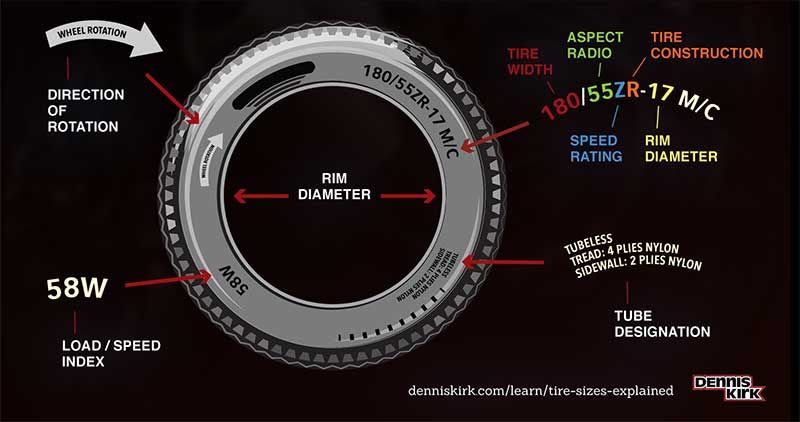 00 per wheel charge
00 per wheel charge
Only applies to Light Truck tires purchased at Sam’s Club
You must possess an active Sam’s Club Membership
Includes demounting, mounting, balancing, and new valve stem (if applicable)
Road Hazard, Lifetime* Tire Repair and Lifetime* Balance & Rotation are Membership benefits
NHS/Non-DOT Tire
$9.50 per wheel charge
Only applies to tires purchased from Sam’s Club
You must possess an active Sam’s Club Membership
Can only be used for tires WITHOUT a DOT number
Includes mounting a specialty tire on a rim only, such as:
Golf car / golf cart – WITHOUT DOT#
ATV / UTV – WITHOUT DOT#
Lawn & Garden or Agricultural – WITHOUT DOT#
Includes new valve stem (if applicable)
Trailer and Specialty Tire Install
$20. 00 per wheel charge
00 per wheel charge
Only applies to tires purchased from Sam’s Club
You must possess an active Sam’s Club Membership
Used only for trailer or specialty tires WITH a DOT number
Includes mounting, balancing and valve stem (if applicable) on a trailer tire WITH DOT# installed on a utility trailer, cargo trailer, boat trailer, horse trailer, etc. OR a specialty tire WITH DOT# that is a RIM ONLY such as:
One-Time Balance & Rotation (OTBR)
$3.88 per wheel charge
This service is ONLY for Members who have not purchased tires from Sam’s Club
Dual-rear wheel vehicles (duallies), RVs, motor homes, and specialty vehicles are NOT eligible for this package
You must possess an active Sam’s Club Membership
Includes air pressure adjusted to placard pressure, balance and rotation of up to four (4) wheels
NOT applicable for new tire purchases
Tire Pressure Monitor System (TPMS) Services
TPMS Reset
$19. 00 per-vehicle charge
00 per-vehicle charge
You must possess an active Sam’s Club Membership
Stand-alone service that includes complete TPMS Sensor check and system reset when required (per occurrence).
This service may be required after a One Time Balance and Rotation
TPMS Sensor Installation
$5.00 per-wheel charge
You must possess an active Sam’s Club Membership
Includes removal of existing TPMS sensor and installation of replacement sensor
Additional charges may include; Sensor(s), Service Pack(s), One Time Balance
TPMS Single Wheel Reset
$5.00 per-wheel charge
You must possess an active Sam’s Club Membership
Includes resetting one TPMS Sensor
This service may be required for a flat repair or single tire install
If two or more Sensors need to be reset, your vehicle may also require a full TPMS System Reset
Tire Studding
$9. 00 per-wheel charge
00 per-wheel charge
Only applies to Passenger and Light Truck tires purchased at Sam’s Club
Tires that are already in service are NOT eligible for this package
You must possess an active Sam’s Club Membership
Includes studs and labor
Available in select markets only
Seasonal Change Over
$9.50 per-wheel charge
You must possess an active Sam’s Club Membership
Includes wheel removal, tire demounting, tire mounting, balancing, new valve stem (if applicable), and wheel installation
Either the tires being removed or the tires being installed must have been purchased from Sam’s Club
NOT applicable for new tire purchases
Tires with 2/32nds or less tread remaining will not be serviced
Seasonal Change Over Dual-Rear Wheel
$17. 00 per-wheel charge
00 per-wheel charge
You must possess an active Sam’s Club Membership
Includes wheel removal, tire demounting, tire mounting, balancing, new valve stem (if applicable), and wheel installation on dual rear wheel vehicles
Either the tires being removed or the tires being installed must have been purchased from Sam’s Club
NOT applicable for new tire purchases
Tires with 2/32nds or less tread remaining will not be serviced
Lug Nut Service
$1.00 per-lug nut charge
You must possess an active Sam’s Club Membership
Service includes lug nut and lug nut installation with recommended torque
Sam’s Club will not service wheel positions with missing or damaged lug nuts or studs
Tire Recycling Service
$2.50 per-tire charge
You must possess an active Sam’s Club Membership
Service includes disposal of one Passenger Metric (P), Light Truck Metric (LT), European Metric, or High-Flotation tire only
Membership limits apply
*Lifetime refers to useable tread down to 2/32nds inch.
**If sensor(s) removal is required to complete tire installation the appropriate TPMS service sack must also be charged. If sensor(s) must be replaced the appropriate TPMS sensor(s) and TPMS Sensor Installation must also be charged.
NO Charge Services
Road Hazard Protection
You must possess an active Sam’s Club Membership
If you purchased the tire from Sam’s Club and had it installed at Sam’s Club using either the Premium Tire Installation Package or the Dually/RV Installation Package
Expands the tire manufacturer’s workmanship / materials warranty to include the pro-rated replacement of a tire with a non- repairable road hazard injury incurred during normal driving conditions for four (4) years from date of purchase
Tires that are repairable in accordance with RMA repair guidelines are not eligible for replacement as a road hazard
Road Hazard pro-ration will be calculated based on the actual remaining tread depth of the damaged tire
You will be required to purchase the appropriate installation package for the replacement tire (depending on the vehicle)
Tires with 2/32nds or less tread remaining will not be serviced
NO Charge Wiper Blade Installation
NO Charge TIP Balance and Rotation
You must possess an active Sam’s Club Membership
Includes wheel removal, balancing, rotation, air pressure adjusted to placard pressure and wheel installation
TPMS reset if necessary
Tires with 2/32nds or less tread remaining will not be serviced
NO Charge TIP Balance Only
You must possess an active Sam’s Club Membership
Includes wheel removal, balancing, air pressure adjusted to placard pressure and wheel installation
Service is used when only a balance is requested or when a rebalance is requested due to ride complaint or vibration after a paid service or after a no charge service has been performed
TPMS reset if necessary
Tires with 2/32nds or less tread remaining will not be serviced
Lifetime* Tire Repair
You must possess an active Sam’s Club Membership
Includes wheel removal, tire inspection and damage analysis, repair (if repairable), mounting, air pressure adjusted to placard pressure, balancing, new valve stem (if applicable), and wheel installation
Applies to all Members’ passenger or light truck tires, regardless of where they were purchased
Sam’s Club acts in accordance with RMA tire inspection and repair guidelines
Tire Repair service will be refused if tire does not meet RMA guidelines for repair
Tires with 2/32nds or less tread remaining will not be serviced
NO Charge Air Pressure & Tread Depth Check
You must possess an active Sam’s Club Membership
Includes air pressure check, tire inflation/deflation as necessary per vehicle placard air pressure recommendations and tread depth check
Tires with 2/32nds or less tread remaining will not be serviced
NO Charge 50 Mile Re-Torque
NO Charge Battery Installation
You must possess an active Sam’s Club Membership
Only applies to new automotive batteries purchased from Sam’s Club
Includes removal of old battery, installation of new battery, and NOCO corrosion treatment
Service available on most Passenger vehicles and Light Trucks.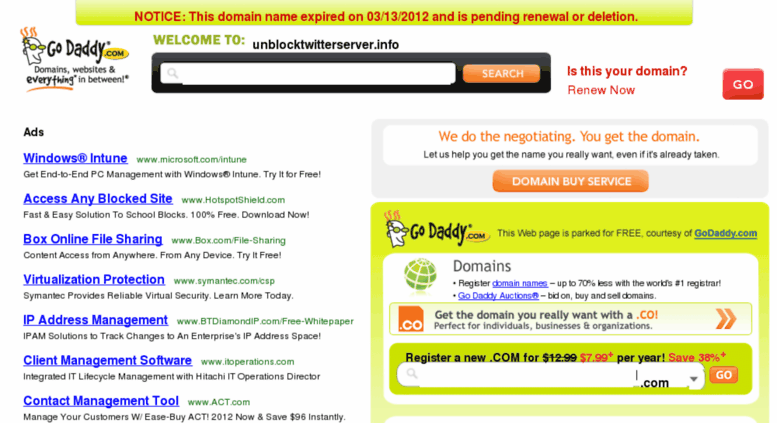
Service is not available on batteries connected in series/parallel and/or vehicles that require extensive labor.
NO Charge Battery Check
You must possess an active Sam’s Club Membership
Includes testing of a battery regardless of where it was purchased
You will be provided a printout of the test results
*Lifetime refers to useable tread down to 2/32nds inch.
Services NOT Offered
Sam's Club DOES NOT offer the following Automotive Services:
Oil Change
Transmission Flush and Fill
Brake Services
Radiator Flushing Service
Tire Alignment/Realignment (realignment is different than balancing)
Shocks/Suspension
Body/Chasis work or repair
Tire order transfers (Tires cannot be purchased at one club and delivered or installed at another club location.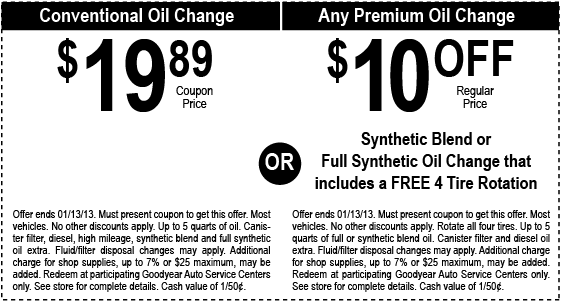 )
)
Sam's Club Tire & Battery Center Hours of Operation:
TBC Hours:
Monday – Saturday 10:00 a.m. — 7:00 p.m.
Sunday, 10:00 a.m. — 6:00 p.m.
Plus Members have early access to TBC Services:
Monday – Friday 8:00 a.m. — 10:00 a.m.
Saturday 8:00 a.m. — 9:00 a.m.
Find a Sam's Club
Back to the Top
Sam's Club Tire Installation:
Call or visit your local club to schedule an appointment for installation.
The Sam's Club premium tire installation package is $20 per tire.
Tire installation for duallies and motor homes is also $20 per tire.
Tire installation can be added to online tire orders or at the club when paying.
The Sam's Club All-in tire installation includes:
Members who had their tires installed at Sam's Club qualify for Emergency Roadside Assistance – For 3 years from the date of purchase, members have 24-hour toll-free access to emergency roadside assistance (active membership required). Call (800) 999-9460 for roadside assistance service
Call (800) 999-9460 for roadside assistance service
Road hazard protection
Lifetime tire balance, rotation and free flat repair (Lifetime of the tire)
New Valve Stem for new tires mounted
TPMS / Tire Pressure Monitoring System Reset
Waste tire disposal
TBC HOURS:
Monday – Saturday 10:00 a.m. — 7:00 p.m.
Sunday, 10:00 a.m. — 6:00 p.m.
Plus Members have early access to TBC Services:
Monday – Friday 8:00 a.m. — 10:00 a.m.
Saturday 8:00 a.m. — 9:00 a.m.
*Services Excluded (vehicles not serviced by ERA): RV’s, fleet vehicles, any vehicle in tow, trucks over one ton capacity, commercial vehicles, vandalism, theft, accident related incidents, all services not dispatched through our toll-free number, service to a disabled vehicle already at a repair facility and off road vehicles.
Find the right tires for your vehicle and/or view additional details about installation.
Attachments
Was this answer helpful?
Anything to add or make clearer?
Help Center home
 e. fully able to perform their functions. At the same time, in comparison with winter tires, summer tires save their owner not only fuel, but also a resource. After all, winter tires are heavier and wear out more at positive temperatures.
e. fully able to perform their functions. At the same time, in comparison with winter tires, summer tires save their owner not only fuel, but also a resource. After all, winter tires are heavier and wear out more at positive temperatures. Does this mean that tires should be changed as soon as the snow melts? Not! It is important to be patient and wait not only for a steady "plus" during the day, but for the absence of night (and sometimes daily) short-term frosts that are quite possible in our climate. In this sense, as they say, it is better to "move".
This is especially true for those who travel on rural secondary roads (and icy yards). For city streets and highways from the highway are actively treated with anti-icing reagents.
Technical regulation of the Customs Union "On the safety of wheeled vehicles" 018/2011, in particular paragraph 5.5, prescribes:
"It is forbidden to operate vehicles equipped with tires with anti-skid studs in the summer (June, July, August).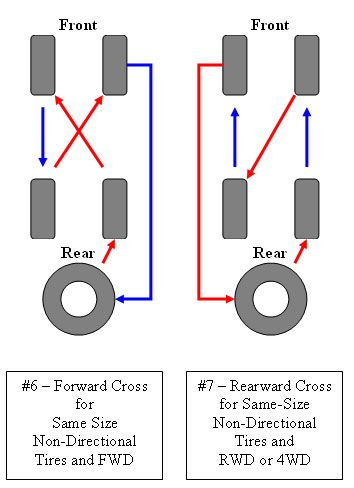
Vehicles not equipped with winter tires that meet the requirements of paragraph 5.6.3 of this annex during the winter season (December, January, February) are prohibited. Winter tires are installed on all wheels of the vehicle.
The terms of the prohibition of operation can be changed upwards by the regional government bodies of the member states of the Customs Union.»
Formally, following the letter of the law, owners of studded tires are obliged to change winter tires for summer tires only and only with the onset of June. However, taking into account the increased wear of winter tires at positive temperatures, higher fuel consumption and mediocre braking performance, it is better to change shoes from winter to summer in a timely manner. Cars equipped with studless winter tires can be used all year round. But, for the reasons described above, I do not recommend doing this. The author of these lines had a sad experience. Wheels with a 5-6 mm tread remaining were worn out almost over the summer.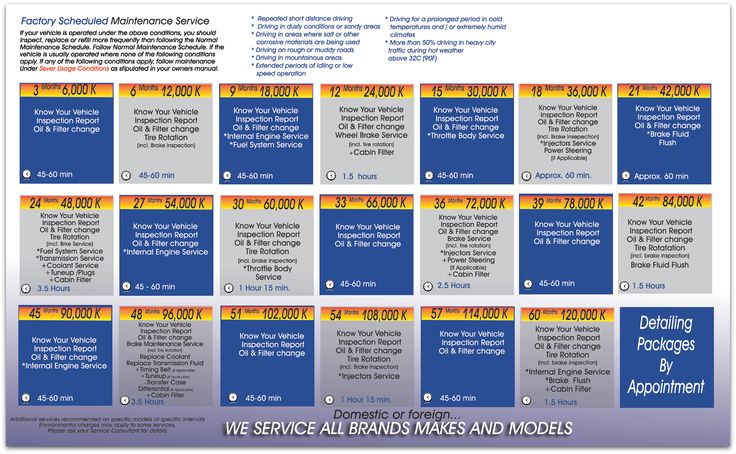 At the same time, the car noticeably “floated” at speeds of more than 100 km / h and an outboard temperature of more than +20 C. Of course, the sensations will be different from the control of the “fours” of the Zhiguli and BMW. A good car eliminates the negative consequences of using tires that are inappropriate for the season. But according to my personal feelings, properly selected tires allow not only to ensure safety, for example, on the same "seven" from AVTOVAZ, but to fully reveal the potential of the S7 from AUDI, charged with more than 400 horsepower.
At the same time, the car noticeably “floated” at speeds of more than 100 km / h and an outboard temperature of more than +20 C. Of course, the sensations will be different from the control of the “fours” of the Zhiguli and BMW. A good car eliminates the negative consequences of using tires that are inappropriate for the season. But according to my personal feelings, properly selected tires allow not only to ensure safety, for example, on the same "seven" from AVTOVAZ, but to fully reveal the potential of the S7 from AUDI, charged with more than 400 horsepower.
But back to the timing of the replacement. In your region (more southerly warm), the authorities may ban the use of winter tires, for example, from March to November. Or in the northern regions - to prescribe the use of winter tires from September to May. At the same time, the authorities at the regional level cannot limit the duration of the ban in force on the "union" territory: from December to February, cars throughout the territory of the Customs Union must use only winter tires, and from June to August - only summer tires.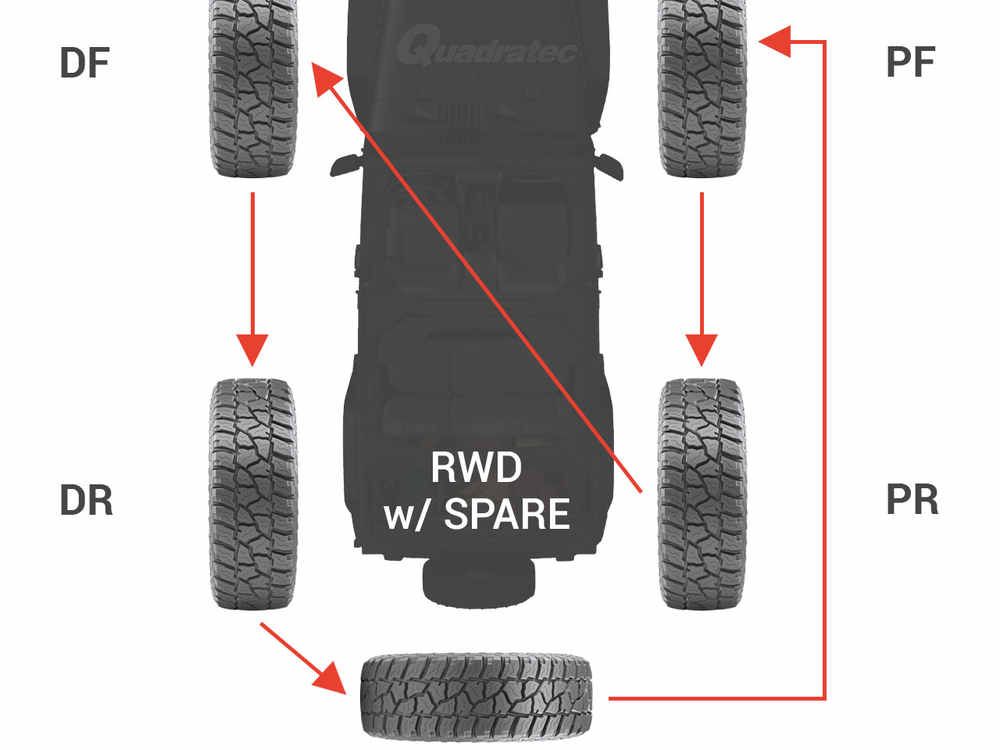
Thus, if we proceed strictly from the terms specified in the Technical Regulations, we get:
| Summer tires (without marking m & s) | can be used from March to November |
| Winter Terrible Tires (with Marking M&S) | can be used from May |
| Winter -nominal wires (samples М&S) | can be used all year round |
As a result, if you have wheels with summer and winter studded tires, then it will take three spring months to change winter to summer tires in spring: from March to May. And before winter - from September to November.
There is still a lot of controversy surrounding the statement: “It is better to have complete wheels than to have tires replaced every season”! Deformation of the onboard zone and sidewall cord is possible. In theory, it’s true - it’s cheaper, easier and more useful to change the wheels as an assembly: when the tire is mounted on the wheel (in everyday life - “disk”).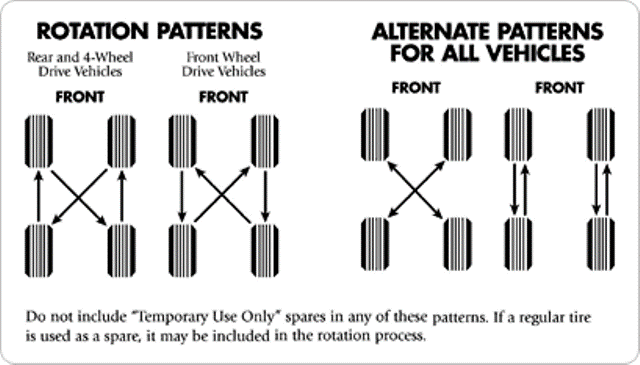 In practice, my more than 20 years of experience and my friends (6-7 seasons already) have shown that nothing criminal happens with tires if tire fitting employees have the necessary and sufficient experience. By the way, did you use such a convenient service as an on-site tire fitting this season? Please write in the comments about your experience. Many, I think, will be interested. After all, this not only saves precious time, but also allows you to maintain health by storing the wheels "in stock" of the service provider. The wheels of modern cars are increasingly increasing in diameter, reaching over 20 inches. Only a physically strong person can lift these!
In practice, my more than 20 years of experience and my friends (6-7 seasons already) have shown that nothing criminal happens with tires if tire fitting employees have the necessary and sufficient experience. By the way, did you use such a convenient service as an on-site tire fitting this season? Please write in the comments about your experience. Many, I think, will be interested. After all, this not only saves precious time, but also allows you to maintain health by storing the wheels "in stock" of the service provider. The wheels of modern cars are increasingly increasing in diameter, reaching over 20 inches. Only a physically strong person can lift these!
I hope I have fully covered the topic of spring tire changes. It remains only to wish you to guess with the weather forecast and always be able to entrust someone to lift your ever-increasing diameter and weight wheels.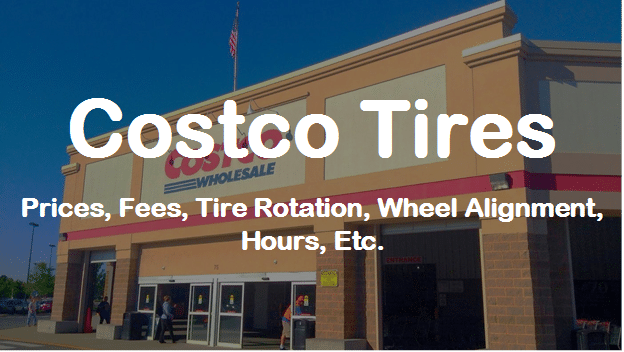
Roller bearings are most commonly used in three types: 608, 688 and 698. First digit - bearing type - 6, means that the bearing is of the "single-row deep groove" type (one row with a deep groove). These are the most common bearings. The second digit of indicates the bearing series. There are the following series (from lightest to heaviest):
8 - extra thin
9 - very thin
0 - extra light
1 - extra light pressure
2 - light
3 - medium
4 - heavy
The third and last digit of indicates on the diameter of the inner ring.
608 bearing . Used in most videos. Inner diameter 8mm, outer diameter 22mm, thickness 7mm.
688 or microbearing . Mainly used in running rollers. Inner diameter - 8mm, outer - 16mm, thickness - 5mm.
698 bearing . They are also called dwarf (dwarf size). They are used quite rarely. Inner diameter - 8mm, outer - 19mm, thickness - 6mm.
They are used quite rarely. Inner diameter - 8mm, outer - 19mm, thickness - 6mm.
688 micro bearings differ in that the outer diameter is 6 mm less than 608 bearings, and the thickness is 2 mm, due to this they have less weight (608 steel bearing weighs about 12 grams, 688 micro bearings about 4 g), are better protected from dust and moisture. The number of balls is usually 9-11 (in 608 bearings there are 7 balls, less often 6 or 8). However, such a microbearing cannot simply be put into ordinary wheels. A special adapter is required for 688 bearings and 688 bushings (they are usually slightly longer than regular bushings). Since adapters are usually made of lightweight plastic, and 608 and 688 bushings are approximately the same in weight, you can get a gain in roller mass. For example, on 4-wheel rollers 608, the bearings weigh about 96 g in total, which is approximately equal to the mass of one more wheel. When replaced with microbearings, the weight is reduced to about 50g, which is almost half as much.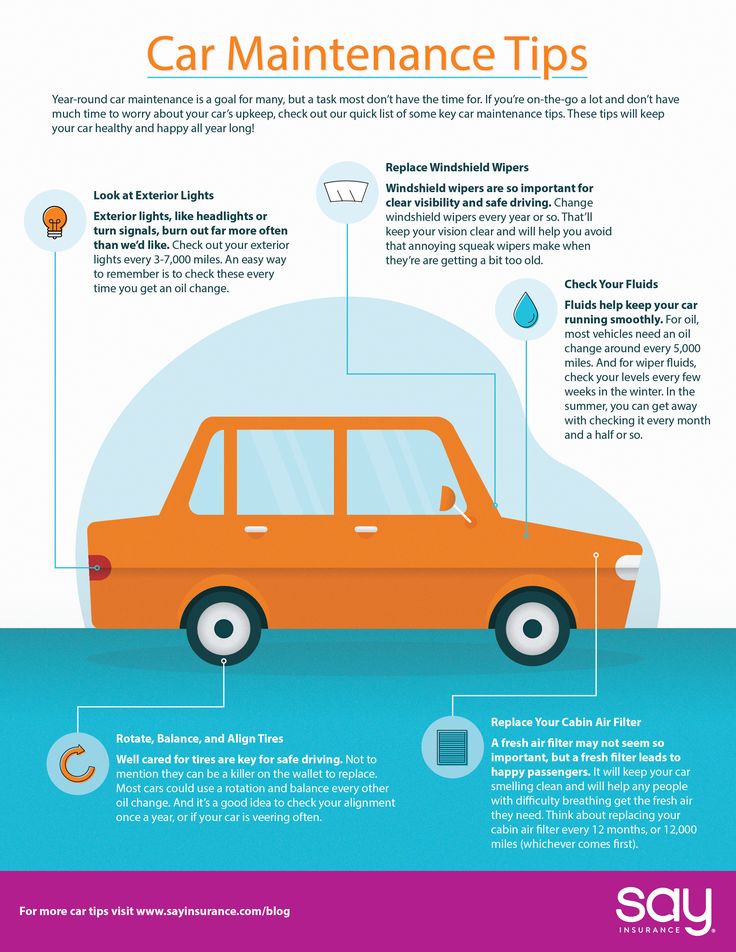 This may be completely unnoticeable for ordinary skates, but for cross-country skates it is not so small when the weight of the frame is up to 200g and the boot is about 300g. Here, reducing the weight for every couple of grams reduces the energy expenditure when running, which is especially important for long distances. However, 688 micro bearings don't handle rough roads or rough pavement as well. In addition, they are much more expensive, due to the increased complexity of production.
This may be completely unnoticeable for ordinary skates, but for cross-country skates it is not so small when the weight of the frame is up to 200g and the boot is about 300g. Here, reducing the weight for every couple of grams reduces the energy expenditure when running, which is especially important for long distances. However, 688 micro bearings don't handle rough roads or rough pavement as well. In addition, they are much more expensive, due to the increased complexity of production.
Cages (or “separator” as you like) are used to hold and separate the balls. Usually metal, the so-called "tape" type (Ribbon cage). They consist of two halves into which balls are pressed.
Higher quality bearings, as well as race bearings, are more likely to use Crown type cages made from various synthetic polymers or metal. Consist of one single piece, easy to put on and take off from the balls.
Also, almost all bearings are marked with the ABEC (Annular Bearing Engineering Council) classification.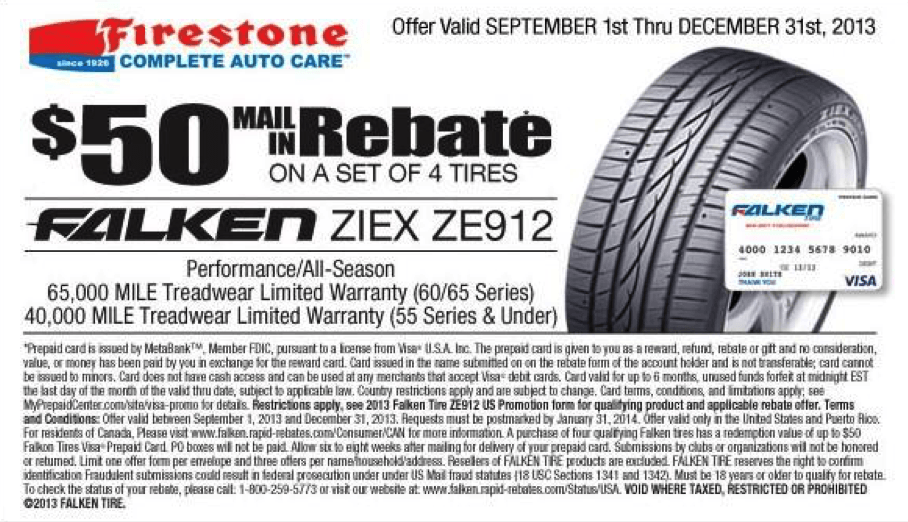 The larger the ABEC number, the higher the manufacturing accuracy. There is no need to adhere to certain materials in the manufacture, the bearings must be made with a certain accuracy (for example, the list indicates the largest error of the inner ring). A higher accuracy class allows the bearing to rotate at a higher frequency with less vibration and friction. There are 5 accuracy classes:
The larger the ABEC number, the higher the manufacturing accuracy. There is no need to adhere to certain materials in the manufacture, the bearings must be made with a certain accuracy (for example, the list indicates the largest error of the inner ring). A higher accuracy class allows the bearing to rotate at a higher frequency with less vibration and friction. There are 5 accuracy classes:
ABEC 1 - Inexpensive bearings. They equip most cheap rollers and skateboards, often without specifying the class. As a rule, they are not designed for maintenance. The error is 0.0075 mm.
ABEC 3 - Conventional medium roller bearings. Not bad for hockey and rollerbladers, which often have to rearrange the bearings depending on the riding conditions. The error is 0.005 mm.
ABEC 5 - Improved bearings for most good rollers. Good for normal frequent riding. They are most common due to good quality and relatively low price compared to ABEC 3 bearings.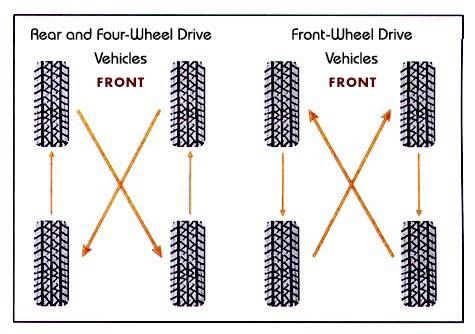 The error is 0.0035 mm.
The error is 0.0035 mm.
ABEC 7 - Racing bearings. Mainly used by experienced rollers who need the best quality. More expensive than other bearings due to increased manufacturing complexity. The error is 0.0025 mm.
ABEC 9 - The most accurate and high quality bearings, and therefore the most expensive. The error is 0.0012 mm.
The ABEC classification is mainly used for roller and skateboard bearings only. Everywhere, the generally accepted system of standards ISO (International Standards Organization - eng. International Standards Organization) is used.
ABEC ISO classification table:
ABEC 1 equivalent to ISO P0
ABEC 3 equivalent to ISO P6
ABEC 5 equivalent to ISO P5
ABEC 7 equivalent to ISO P4
ABEC 9 equivalent to ISO P2
eg ABEC 7 and ABEC 3 bearings. The higher accuracy is hardly noticeable at a speed of 20 km/h. Vibration reduction and rolling improvement are clearly visible at about 10,000 rpm (about 150 km/h on an 80mm wheel).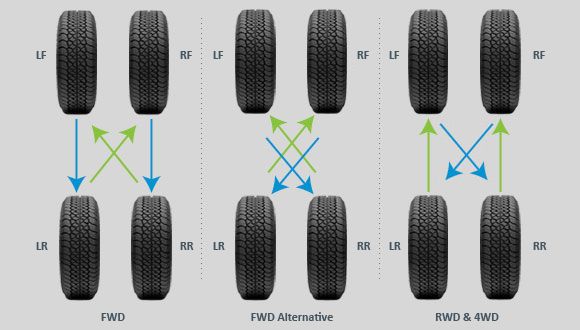 The highest speed for ABEC 1 bearings is approx. 32,000 rpm. A regular roller skates at about 2,000 rpm, while a downhill roller can go up to 4,000 rpm. In addition, it must be taken into account that the ingress of dust, dirt, wear lead to a deterioration in the bearing class. Because of this, when replacing bearings with new ones, higher in class, it may seem that they drive faster. This is only due to the fact that there is no dirt in them, the lubricant is clean, they are not damaged by dust particles, etc. So changing the lubricant, reducing air friction, changing your riding position, and improving your riding technique is likely to increase speed much more effectively than changing bearings.
The highest speed for ABEC 1 bearings is approx. 32,000 rpm. A regular roller skates at about 2,000 rpm, while a downhill roller can go up to 4,000 rpm. In addition, it must be taken into account that the ingress of dust, dirt, wear lead to a deterioration in the bearing class. Because of this, when replacing bearings with new ones, higher in class, it may seem that they drive faster. This is only due to the fact that there is no dirt in them, the lubricant is clean, they are not damaged by dust particles, etc. So changing the lubricant, reducing air friction, changing your riding position, and improving your riding technique is likely to increase speed much more effectively than changing bearings.
High quality bearings
Many manufacturers also produce high quality bearings, the so-called Swiss. They differ from simple ones in high precision processing and the use of the best technologies (polymer cages, rubberized anthers, liquid lubricants). Therefore, they are more expensive than usual.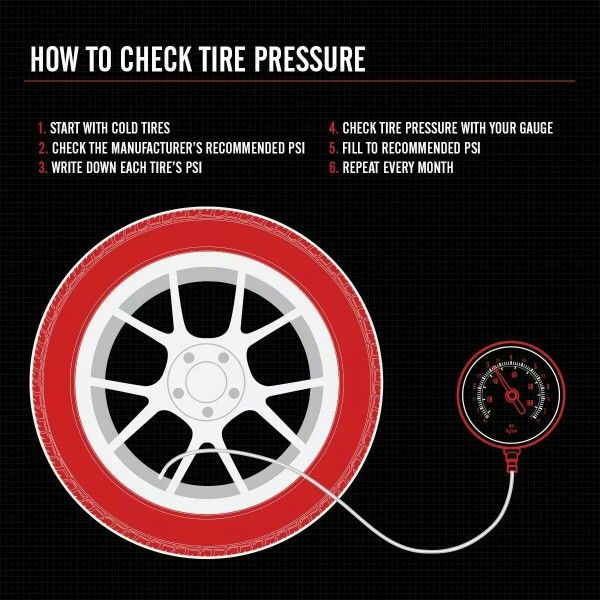 Also, manufacturers often indicate "Titanium" on bearings. This means that titanium is included in the composition of the alloy, which allows to increase endurance.
Also, manufacturers often indicate "Titanium" on bearings. This means that titanium is included in the composition of the alloy, which allows to increase endurance.
Ceramic bearings
There is another type of bearings - ceramic bearings, which differ from conventional ones in material. If almost all are made of either stainless steel or chrome, then in these balls are made of silicon nitride. A ceramic ball is smoother, stronger, and lighter than a steel one. Due to this, such bearings have a number of advantages:
- ceramic balls are lighter than steel . Weight of ceramic bearing approx. 9-10 grams. Also, due to this, the centrifugal force acting on each ball is also less. And this leads in turn to a decrease in the energy spent on friction.
- stronger than steel . Due to this, a high-quality ceramic bearing will last an order of magnitude longer than a steel one.
- have a smoother surface than which reduces friction in the bearing.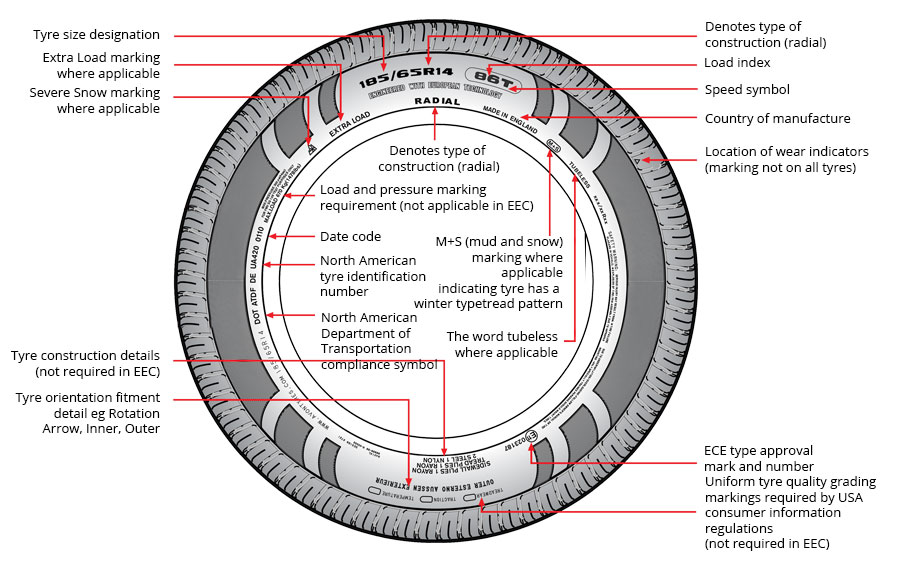
- have better temperature properties than . They do not heat up so much, which reduces the evaporation of the lubricant.
- are resistant to oxidation and chemical reactions and require virtually no lubrication. Due to this, such bearings are more resistant to water and do not require frequent maintenance. Oil is always used as a lubricant.
However, the inner and outer rings remain, as in conventional bearings, steel and vulnerable to moisture. This is done to reduce friction when the ball rolls in the groove. Metal, unlike ceramics, is flexible and over time, under the pressure of the balls, the grooves are slightly formed. This polishes the grooves and reduces friction. Another negative at this point is that with the constant rearrangement of the bearings, these grooves expand, and play appears due to the constant change in the direction of pressure.
But not all ceramic bearings are good! There are also cheap versions in which the balls are made of steel and coated with a layer of silicon nitride. It's better not to use them for two reasons. First, they do not have all the benefits of quality ceramic bearings. Secondly, due to the differences in the properties of these two materials, the ceramic layer peels off from the steel.
It's better not to use them for two reasons. First, they do not have all the benefits of quality ceramic bearings. Secondly, due to the differences in the properties of these two materials, the ceramic layer peels off from the steel.
Ceramic bearings are not only 608. but also 688 bearings. If they are also Swiss - the best option for racing. The price corresponds to the best quality.
Suffixes
Typically, after the bearing type, manufacturers add Latin letters - suffixes - for example, "RS" or "ZZ". They characterize the type of anther on it. The following designations are most commonly used:
Z - metal boot on one side of the bearing
ZZ - metal boots on both sides of the bearing (more often "Z" is used, although boots are on both sides)
RS - metal boot with rubber coating
2RS - with both sides of the bearing
However, some manufacturers use their own designations, and the same bearing can be designated differently.
Removing the boot
Almost always the bearing is covered with boot on one or both sides. If the anther is held with the help of the so-called C-ring, then the bearings are called collapsible. If necessary, the anther can be easily removed from them. To do this, you only need a pin or needle. You need to tuck the ring on one side and pull it out. After that, the anther is quietly pulled out or shaken out. You can also insert it back without any problems and do not forget to put on the C-ring. This procedure is done if you need to clean the bearing and change the lubricant. Some manufacturers produce bearings with a boot on one side. This side must be outside when mounted on the wheel. All the same, dust does not get inside the wheel, so this technique allows you not to waste time constantly removing anthers.
If the anther is held with the help of the so-called C-ring, then the bearings are called collapsible. If necessary, the anther can be easily removed from them. To do this, you only need a pin or needle. You need to tuck the ring on one side and pull it out. After that, the anther is quietly pulled out or shaken out. You can also insert it back without any problems and do not forget to put on the C-ring. This procedure is done if you need to clean the bearing and change the lubricant. Some manufacturers produce bearings with a boot on one side. This side must be outside when mounted on the wheel. All the same, dust does not get inside the wheel, so this technique allows you not to waste time constantly removing anthers.
However, there are still very similar bearings that do not have a C-ring, but instead the boot is pressed in with a solid ring. Such bearings are called non-separable. But this does not mean that anthers cannot be removed in them, it is simply not provided for by the design and then they cannot be put back on.